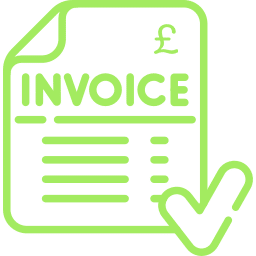Ask any small business owner what their number one pain point is and there’s a good chance they’ll say cash flow. At the heart of most businesses is either not enough cash coming in or too much going out, effective business cash management is the lifeblood for your business.
It doesn’t have to be a constant pain in the neck and your cash flow shouldn’t be getting in the way of expansion, growth and operational stability. If cash flow is managed properly and with the option of having appropriate lines of credit in place, like unsecured business loans, every business in the UK has a chance to manage their business cash into profit and growth.
Make a Habit of Forecasting Your Finances
One of the best tips for effective business cash management is to continually forecast your cash flow. While often overlooked, forecasting your cash flow can paint a pretty accurate picture of how your business is performing each month. Taking the time to address your figures closely every month offers a clear picture for how your business expenditure is going to be looking the following month.
Insufficient cash flow is one of the main causes for businesses to fail; when it earns less money that is needed to pay its way (buying stock, paying staff and overheads) it’s on a countdown to failure. Forecasting allows your business to:
- Mitigate the impact of unexpected shortfalls in cash
- Prepare budgeting measures to be implemented.
Establish Your Payment Priorities
One of the biggest concerns affecting cash flow is having to pay creditors, but your business won’t always be in a position to pay everybody at once, so you need to decide which credit accounts should be paid first and which ones are going to have to wait.
It can often feel like your accounts payable department is like a the air traffic controller of a busy airport, where multiple planes are attempting to land and where they all claim to have little or no fuel left, but there is only one runway, and only one plane can land at a time.
What happens when you start writing all your checks at once
The worst possible thing to do is to actually pay all your debts at once. If you don’t have enough money to cover them your bank will start bouncing your payments and all hell ensues.
This isn’t a healthy way to deal with your cash flow and it doesn’t help your creditors either in the short term or the long term. The only happy accounts are the few that go through first.
- Creditors realise that your checks bounce and lose confidence in you and destroy otherwise good working relationships
- Your credit rating starts to drop
- Your bank starts to take a more active interest in your financial affairs as your actions appear more cavalier than prudent
- You start to lose track of who has been paid and who hasn’t.
While your intentions might be good, the result is going to affect your financial standing for a considerable time.
So who do you pay first?
Most creditors are happy to work with a business that has strained lines of cash flow, but only when they aren’t pushed too far. Keeping your lines of communication open is a must, and where possible, part payments are always accepted.
If you are going to write your checks, place them in a staggered, holding pattern as follows:
1. Write out each check
2. Organise them into an orderly pattern, the most important first and so on
3. Stagger the payment dates and write on each envelope the date they should be posted, or the order in which you should send them.
- Priority Payments – The accounts that are too important to put off, these can be either VAT, payroll or rent.
- Important Payments – Supplier accounts that have run out of patience or understanding and whom you are in current need of to fulfil orders, utility bills and any other payments that are likely to infringe less on your ability to trade.
- Flexible Payments – Any small creditor account or those which offer generous credit terms.
Encouraging Your Customers to Pay Faster
In contrast to getting the best deal possible from your creditor, you should be looking at ways in which you can encourage your customers to pay you quicker.
The most effective way of ensuring customers pay you quick is by enforcing your payment terms. Immediately offering 60 or 90 day payment terms doesn’t do you any favours, however starting off with 15 or 30 day payment terms and maintaining strict control of these, without exception, can quickly make your terms standard for your customers. When you give any customer an inch, they’ll take another 30 days to give it back!
Key points to consider when setting payment terms for your customers include:
- Offering credit limits appropriate to customers’ level of risk
- Ensuring credit accounts are insured
- Maintaining good lines of communication with their accounts
- Sending out prompt invoices, statements and payments due correspondence
- Getting verbal clarification on payment dates
- Putting accounts on stop when they stray from their agreed credit terms
- Incorporating late payment fees.
However, it is a fact that the bigger the company you are dealing with the later they will set their payment terms. Which in effect squeezes the breathing room for their suppliers. If that supplier is you, then you need to be lobbying hard to get your cheque towards the top of the pile.
A recent report from the New York ties analysed the payments terms of big companies and found that many were actively using extended payment terms (up to 4 months in some cases) as part of their business strategy. This is contrary to what most people expect when confronted by requests to extend payment terms, which usually indicate a company is in some financial trouble.
This big business strategy is aimed at increasing cash flow for immediate projects and the bigger companies are able to use these terms to raise huge amounts of short term cash flow to either restructure or embark on new projects, without having to resort to supply chain finance or other form of external funding.
But, that doesn’t help SMEs with their own cash flow.
Opening Up Credit Lines With Your Financial Provider
For SMEs, effective cashflow forecasting and understanding how payments terms are often dictated by customers demonstrates the need to be opening up available lines of finance as soon as possible.
Possible lines of credit include:
Invoice Discounting – Setting up an invoice discounting facility with a finance provider can help mitigate the effects of delayed or later payment from your bigger customers. Using selective invoice discounting can be an effective way of getting paid immediately, without having to wait for your customer to pay the invoice.
Unsecured Business Loans – Having an unsecured business loans (UK) facility can help you cope with any unexpected pitfalls in your cash flow. Getting approved isn’t always straightforward, although this depends on your lender. What this enables you to do, is have access to finance at the ready for whenever you need it, without it affecting your day-to-day business operations.
Cash Flow Management & Growth
Tying in the way you are monitoring your cash flow and the payments going in and out of your business is the way you handle growth.
Focusing on your cash flow management should be looking at three stages of your business:
- Breakeven point
- Profit
- Growth
Knowing exactly what it takes to achieve your breakeven point will allow you to generate the profits needed to achieve growth. And while all three are linked, it is the breakeven point that is the most critical.
Breakeven Point
According to the financepractitioner.com, the point at which a product stops costing your business money and starts to generate a profit on the bottom line of your balance sheet is the point of breakeven
It is important because the goal of any business is to make money and the breakeven point is the first true benchmark a company ought to be celebrating.
Profit & Growth
Profits start increasing once a business becomes efficient at producing the commodities that it supplies. Any change to that formula will change the levels of profit.
Growth occurs when this profit is manipulated, through efficient cash flow and expansion of operations, to increase the amount of commodities the business supplies.
Avoiding Bad Cash Flow Management Practices
There are 4 very costly errors you can do with your cash flow management, which you should be aware of in order to avoid:
Overestimating Sales
Being optimistic about sales without having the figures or the structure in place to achieve it, can be one of the most detrimental forces working against your business. It makes your breakeven point become too much of an obstacle to overcome and can affect any future predictions concerning cash flow forecasting.
Accurate Expenditure
Cash flow errors occur all the time when looking at business expenses. It can be all too easy to forget the effects of taxes, business rates, rent rises, cost of materials and shipping fees. But there are also countless other factors that can become critically important to the success of your business. Machinery breakdowns or the loss of key employees can force pressure on your cash flow expenditure and affect your business’ ability to reach profit.
Accounts Payable
Until a customer has paid, you don’t have the money, so it’s important to ensure that your cash flow figures represent this. Relying on figures showing cash is available when you don’t actually have it can be misleading in your cash forecasting.
Growth Costs
When companies grow, especially when they do so quickly, can place them in a vulnerable position. When cash flow reserves are used, they are no longer there. Combined with increased production and supplier costs and it is possible that the lag between growth outlay and sales in can affect any business cash flow demands.
Monitoring, Forecasting and Planning Your Cash Flow Growth
Prioritising your payments will help you whilst you are in the midst of any cash flow difficulties and your creditors are barking at the door, but before that you should be monitoring and assessing your cash flow forecasts so that you are forewarned of any difficulties that might lie in the road ahead.
Cash flow is vital in order for companies to get past their breakeven point and start making profits, but this is only achievable when combined with an effective accounts department and a strong accounts invoicing structure.
If difficulties do arise, it is important you act as quickly as possible, utilising all your lines of credit, including unsecured business loans in the UK, which will allow trading to continue without having to scale back operations.
Funding Guru can help in offering lines of credit including unsecured business loans for UK businesses as well as offering guidance and financial options for any stage of your business growth.






















